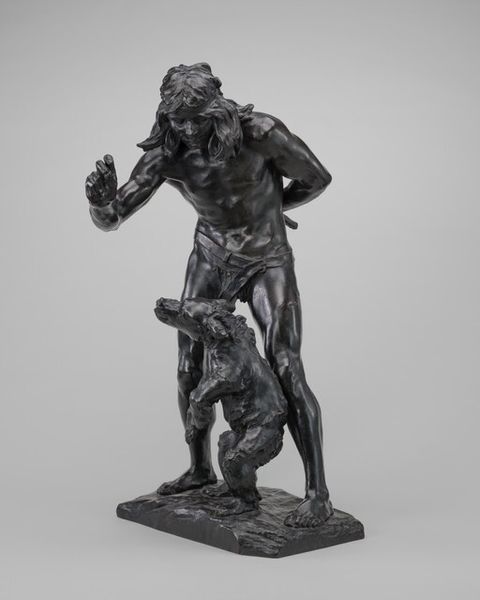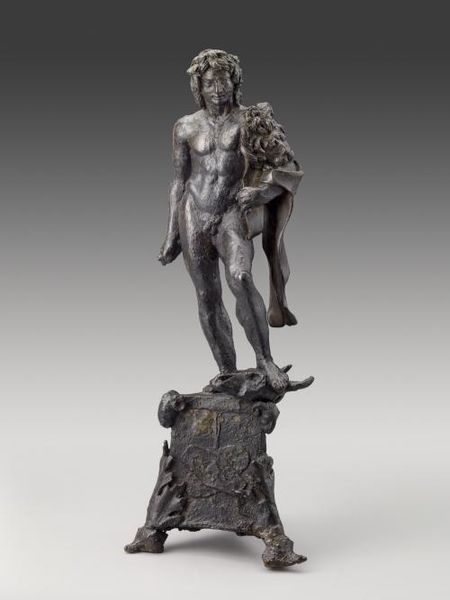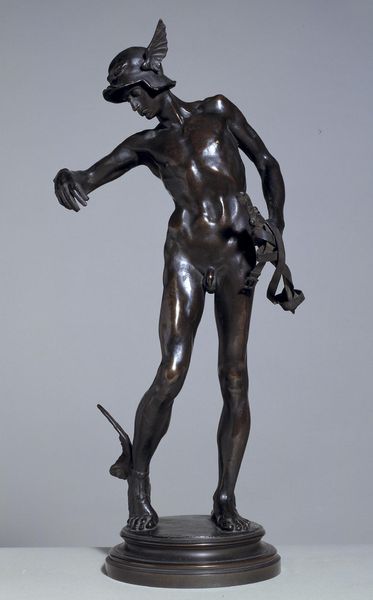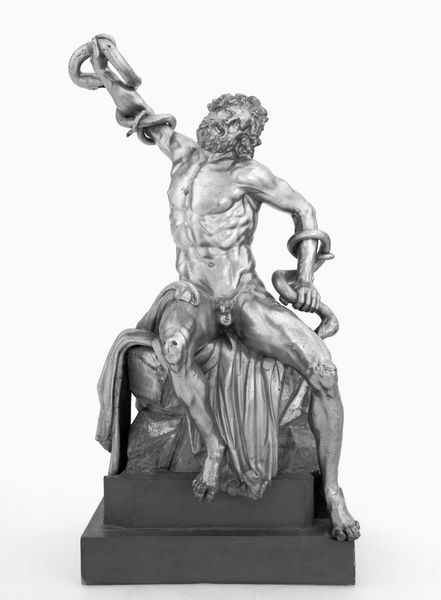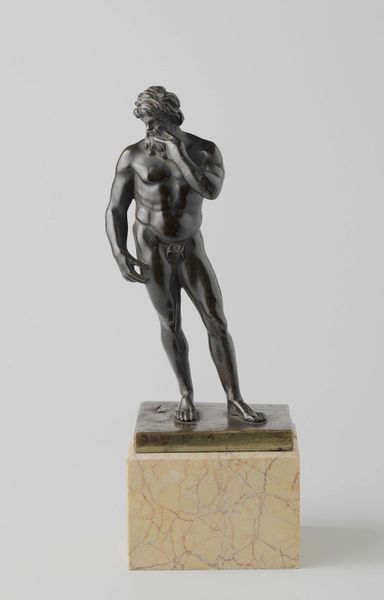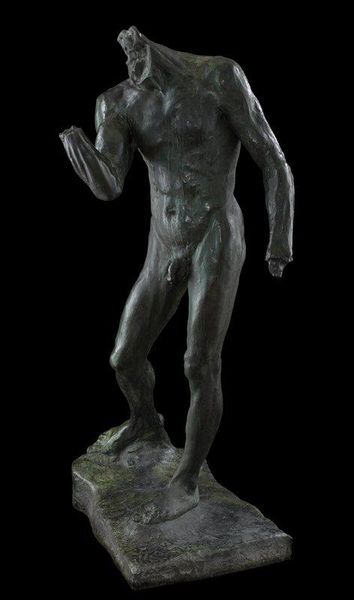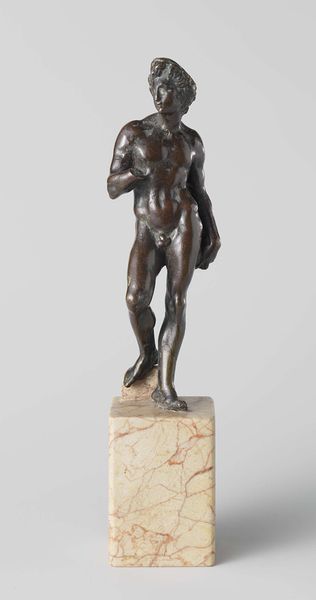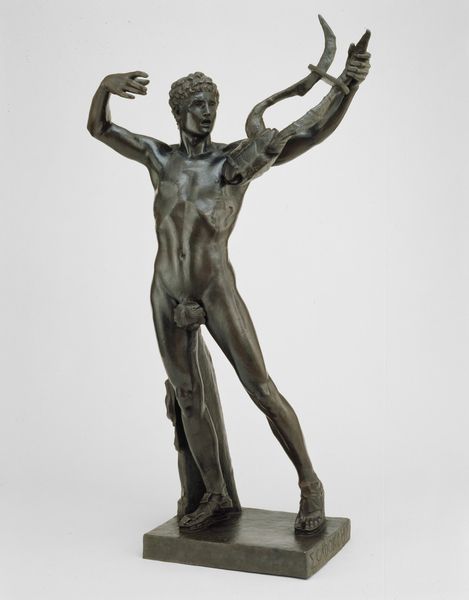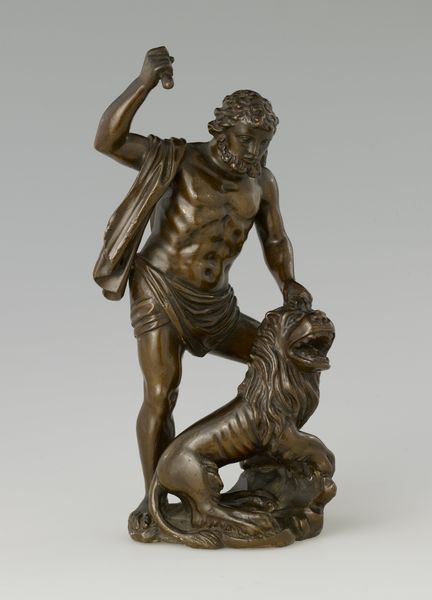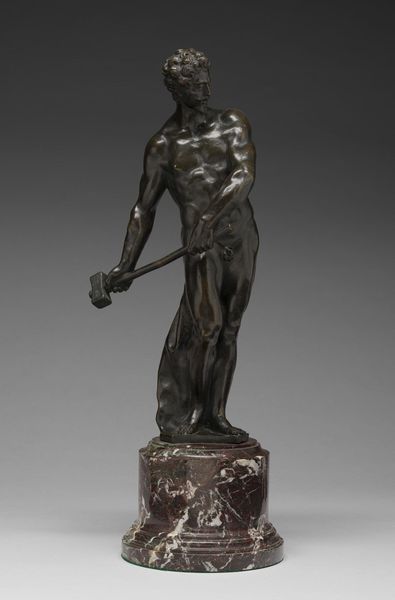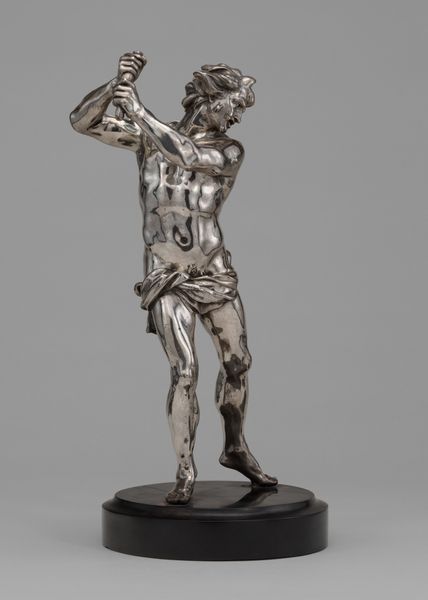
bronze, sculpture
#
portrait
#
sculpture
#
landscape
#
bronze
#
figuration
#
sculpture
#
academic-art
Dimensions: 45.7 × 21.6 × 13.3 cm (18 × 8 1/2 × 5 1/4 in.)
Copyright: Public Domain
Curator: I am immediately struck by the complex power dynamic captured in this piece, especially between man and animal. It seems fraught. Editor: Indeed. This is Paul Wayland Bartlett's "Indian Youth Training a Bear," sculpted in bronze sometime between 1887 and 1897. It's quite evocative of a particular perspective on man's dominion over nature, reflective of that era. Curator: Absolutely. Look at the way the youth’s gaze is directed downward. There’s a tenderness, almost, but it's overshadowed by the symbolic weight of the chain and his raised hand commanding obedience. What's especially striking is how Bartlett uses figuration to illustrate the perceived role of culture to restrain natural forces. It brings forth deep seated ideologies around civilization. Editor: It also speaks to a popular 19th-century fascination, and perhaps idealization, of indigenous peoples' perceived relationship with the natural world. Notice how the youth, while seemingly in control, is only semi-clothed, linking him, visually, more closely to the bear, to untamed nature. Curator: I hadn't considered that aspect of shared vulnerability. The chain, therefore, becomes a potent symbol of forced control, applied not only to the bear but perhaps, metaphorically, to the youth himself. It really is a comment on imposing systems of subjugation on any marginalized being or entity. The artist clearly depicts this with the animal’s positionality as he must be trained for performance. Editor: This sculpture likely had complex reception and impact, reflecting changing views toward both indigenous populations and wilderness at a crucial period in American history. Did the audience question it or did they reinforce popular views? Bartlett was playing on some deeply ingrained assumptions about civilization, progress, and the perceived need to control the "uncivilized" world, so questions would arise surrounding these concepts. Curator: A compelling object for considering how art serves to reinforce—or perhaps unintentionally reveal— underlying societal anxieties and values. Its place in the Art Institute is particularly charged because it suggests a continued engagement with historical tropes surrounding the role of Native Americans in a progressive United States. Editor: Yes, a vital piece for thinking through the evolving politics of representation and power as they played out on the American frontier.
Comments
No comments
Be the first to comment and join the conversation on the ultimate creative platform.
